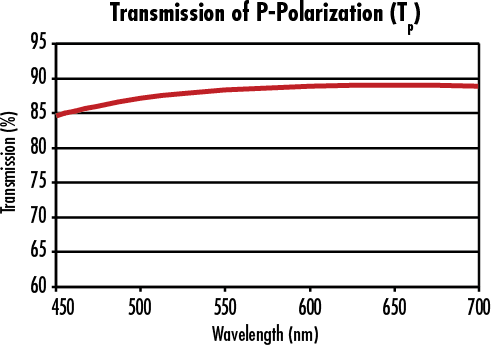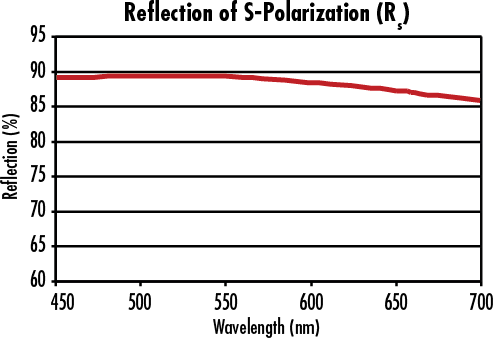
| Volume Pricing | |
|---|---|
| Qty 1-10 | A$402.11 each |
| Qty 11-25 | A$303.23 each |
| Qty 26+ | A$294.99 each |
| Need More? | Request Quote |
Broadband Polarizing Plate Beamsplitters consist of a thin layer of aluminum MicroWires adhered to a glass window. These beamsplitters are an alternative and economical substitute for ruled or holographic wire grid polarizers. Providing exceptional image contrast and uniformity, these beamsplitters are ideal for applications requiring large angular apertures and high throughput. Broadband Polarizing Plate Beamsplitters reflect S-polarized light and transmit P-polarized light. The beamsplitters are offered in a 12.5 x 12.5mm or 25 x 25mm size.
Note: MicroWires are very fragile. Handle these beamsplitters with care.
If the operating temperature will exceed 100°C, turn the MicroWires surface away from the input beam for optimum performance. At temperatures below 100°C, the MicroWires can be oriented towards the input beam.


These optics require special handling to avoid damage and ensure long-term performance. Proper handling, cleaning, and storage are essential to maintain optical quality. Explore our Optics Cleaning Resources for step-by-step guides and best practices. For personalized assistance, Email us or Chat with our technical support team.
or view regional numbers
QUOTE TOOL
enter stock numbers to begin
Copyright 2024, Edmund Optics Singapore Pte. Ltd, 18 Woodlands Loop #04-00, Singapore 738100
California Consumer Privacy Acts (CCPA): Do Not Sell or Share My Personal Information
California Transparency in Supply Chains Act
The FUTURE Depends On Optics®